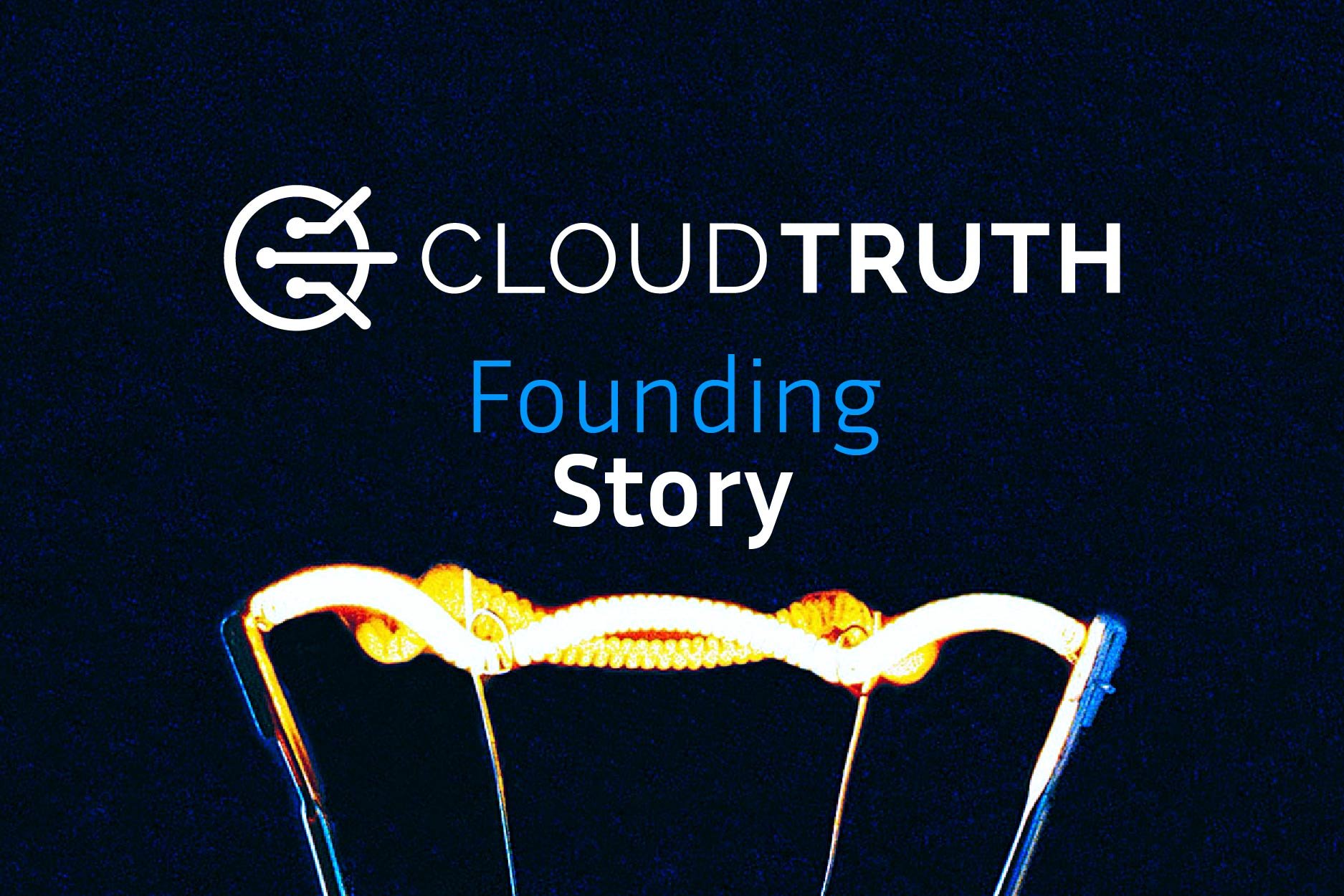
TL;DR
- With my background as a CTO, I’d experienced the pain of configuration sprawl first-hand.
- I led teams that were trying – and failing – to build their own internal tools to address this challenge.
- Using our own experiences as a backboard, Matt and I set out to provide a true “single record of cloud truth” to help product engineering and CloudOps teams.
- We are announcing funding today that will allow us to bring this much-needed solution to market!
$5.25 Million Raised in Funding
Today, we’re proud to announce that CloudTruth has raised $5.25 million in seed funding. CTO/Co-Founder Matt Conway and I are absolutely thrilled – but the work is far from done.
In addition to the funding, we’re also announcing that Tuono has merged with CloudTruth. Founder Jesse St. Laurent joins us as Chief Product Officer, along with Tuono founding architects Jim King, Mike Healey, Mike Stack, and the rest of the team in similar roles.
We know that this funding pushes forward our mission to empower product engineering and CloudOps teams with the right cloud configuration solution. It’s a mission we’ve been seeking out since our own days as engineering leaders.
The first installment of our founding story blog taught you a little about how Matt and I joined together to start CloudTruth. Once we learned that our personalities and skill sets were compatible, we put ourselves in the shoes of our end consumer to create a solution that actually helps product engineering and CloudOps teams.
Configuration Management
First-class configuration management is difficult. Excelling at infrastructure provisioning, application configuration and secrets management is the foundation of a secure, reliable high-velocity delivery strategy. In our own experience, we have seen cloud engineering teams patch together various solutions in an attempt to tame this complexity.
Configuration sprawl is a pervasive problem that can cause outages, security headaches and generally slow down dynamic DevOps teams. Context switching causes a high cognitive load because there isn’t one single record of “configuration truth” for an entire system. Hunting down settings across multiple tools and parameter stores is a time-consuming drag.
We wanted CloudTruth to reduce complexity and help accelerate DevOps teams.
Matt and I thought: what if we could create that tool to solve the problem we faced ourselves, and make it available to other teams as a service offering? That’s where CloudTruth came into play.
Some of the lessons we would later apply to CloudTruth were learned more than a decade before our idea came to fruition. Back in 2006, with the advent of AWS S3, EC2, and SQS, Matt and I saw the potential of “public cloud” earlier than most. And there were many skeptics back in those days. At that time the “on-demand, pay-as-you-go cloud” was just too far-fetched to seem real. Unless your mind was already primed for this opportunity.
How We Got Here
Around 2004, I was piloting Sun Microsystems’ Utility Computing service. Ultimately, the price point just didn’t make sense for my project, so when Amazon Web Services launched the original AWS services at a fraction of the prices Sun was charging, the economics made sense, my brain was already wired to “buy into” paying for computing on demand, and one of the greatest paradigm shifts in IT began to transform entire segments of the data center and enterprise software market.
Matt and I became friendly in the years following – around 2010. Our relationship grew over time, with each of us seeing our companies undergo acquisitions. Once Matt transitioned out of his CTO role at Backupify, he started Simply Genius: his own consulting service to help Boston-area SaaS companies untangle their cloud configuration messes. Matt was in the business of getting people out of jams – jams caused either by adopting poor practices or teams not being set up for growth.
I had a similar desire to help DevOps teams increase their efficiency. After years of working with information governance folks, I wanted to solve a problem that I faced while leading a DevOps team. I truly feel the pain of the end-user – and strive to alleviate the unnecessary stress of today’s configuration management landscape.
The way we’re using the cloud in 2021 is changing rapidly. The fast rise of Kubernetes, breaking monoliths into microservices, and using more third-party API services place new challenges for doing “really good configuration management.” What was once considered “state of the art” is now barely keeping pace with the changing times.
In addition, adopting “shift left” strategies means configuration will become more distributed and decentralized. This is a good thing when the right tooling is in place (this is where CloudTruth comes into the story) because development teams can run at their own pace, but still allowing operations teams to enforce the guardrails to ensure uptime SLAs and maximum security.
We wanted CloudTruth to be grounded in the real day-to-day challenges CloudOps teams handled. To ensure our gut instincts were not giving us a “false positive” we embarked on a rigorous product-market fit research project documented in a recent blog post.
I interviewed over 500 cloud operations leaders and heard countless examples of teams building internal DIY tools to manage configuration complexity. We saw a common pattern emerge that matched our original thinking with a few epiphanies thrown in. We learned about the backstories and hassles of maintaining these tools and the notion that so much of the really valuable understanding of how the entire system works is held as “tribal knowledge” in key people’s heads. These internal tools often didn’t get the test coverage and started to become new sources of frustration instead of solving problems.
This was our strong signal from the market that the time was right to bring the idea of CloudTruth to market. We’re taking an iterative approach. We have an expansive platform ambition, and to get started we found a way to enter the market by solving specific problems managing Terraform, Kubernetes, and secret configuration data.
If you’re serious about accelerating your team with unified configuration management, click here to sign up for a free demo today.
Join ‘The Pipeline’
Our bite-sized newsletter with DevSecOps industry tips and security alerts to increase pipeline velocity and system security.


